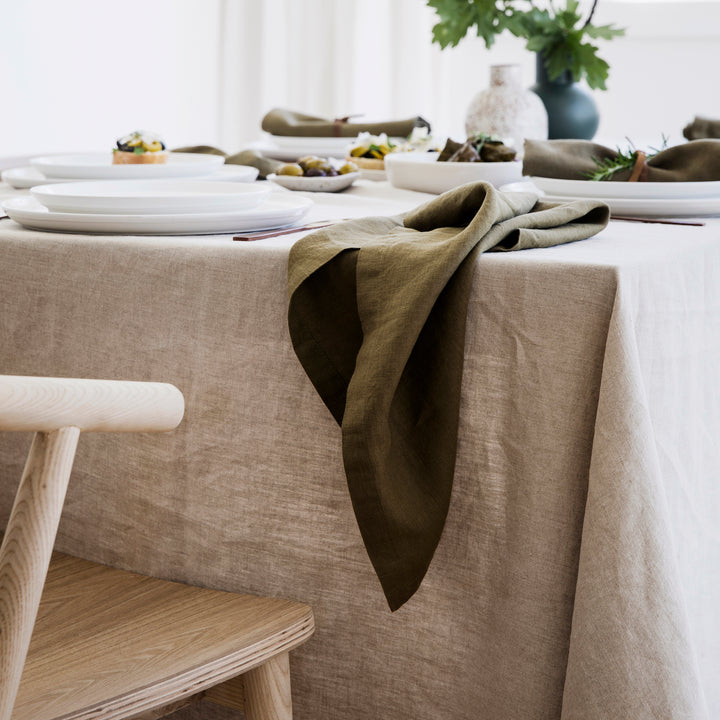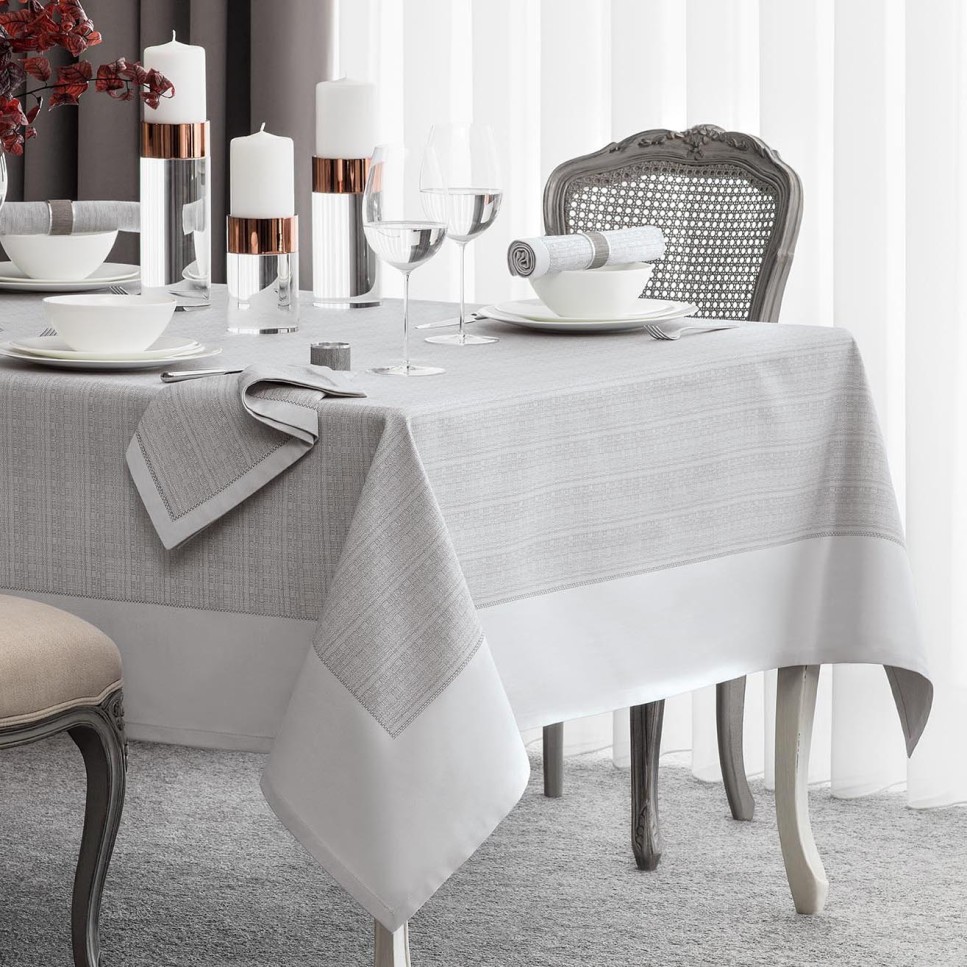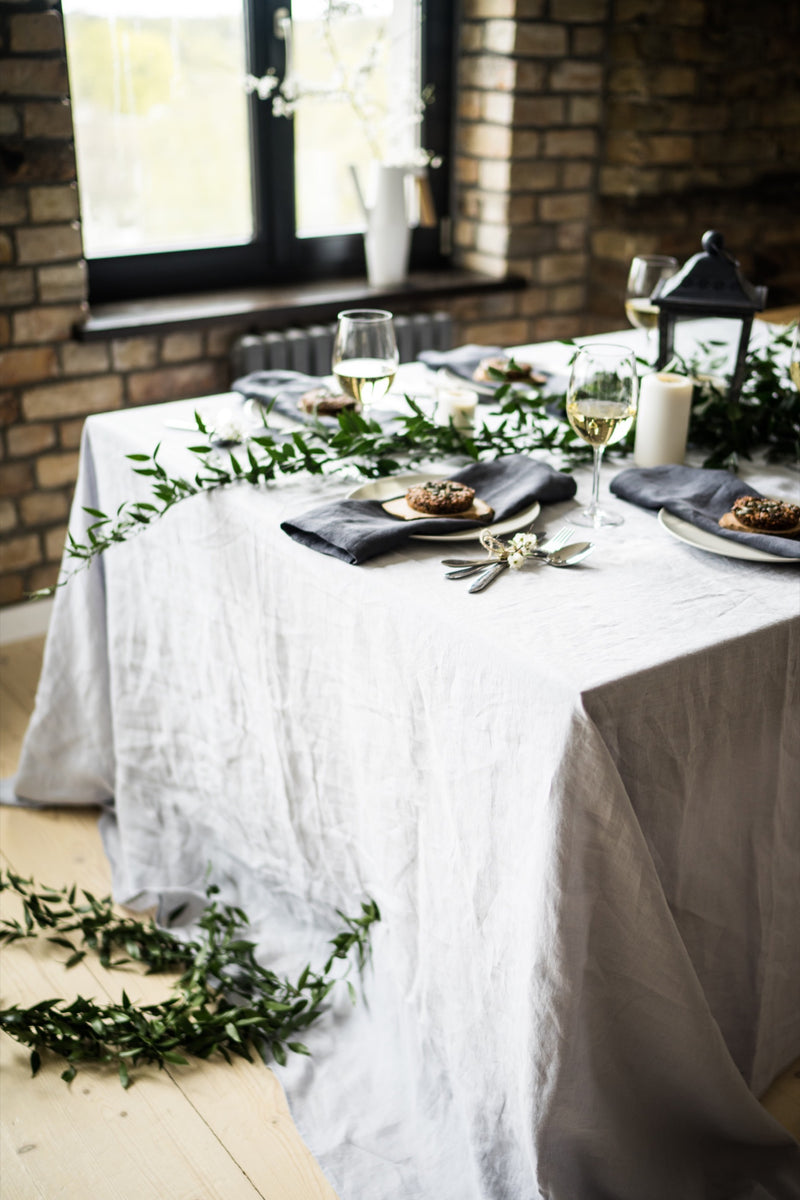Creative Table Runner Uses: Past the Table
Wiki Article
Linen Fabric Innovations: Exploring Modern Trends and Creative Applications in Layout and Fabric Market
From lasting manufacturing techniques to innovative weaving innovations, the development of linen is reshaping the landscape of the fabric sector. As we dig into the worlds of imaginative style applications and the development of bed linen blends and crossbreed materials, a new phase unravels in which linen's duty in future fabric developments takes facility phase.Sustainable Practices in Bed Linen Production
Sustainable techniques in linen manufacturing have actually become increasingly critical in the fabric sector's initiatives to lessen environmental influence and promote ethical sourcing techniques. Linen, an all-natural fiber originated from the flax plant, offers a variety of benefits such as biodegradability, durability, and breathability. Nonetheless, standard approaches of linen manufacturing can involve considerable water consumption, pesticide usage, and energy-intensive processes.To resolve these challenges, lots of fabric producers are taking on sustainable methods throughout the bed linen production procedure. This consists of sourcing flax from organic farms that prevent damaging chemicals and chemicals, implementing water-efficient retting methods to remove fibers from the flax stalks, and making use of eco-friendly dyes and finishes. In addition, some companies are purchasing renewable resource sources to power their production centers and lowering waste through recycling and upcycling efforts.
Technological Improvements in Bed Linen Weaving
With the growing focus on sustainable practices in linen production, the textile market is currently experiencing a rise in technical advancements specifically focused on reinventing the art of bed linen weaving. These technologies are improving the means linen fabrics are produced, providing boosted effectiveness, high quality, and creative thinking in weaving strategies.Among the vital technical advancements in linen weaving is the integration of computerized looms. These advanced looms are equipped with software that permits elaborate and complex styles to be woven with accuracy. By digitizing the weaving procedure, suppliers can attain higher consistency and precision in their bed linen textiles.
Furthermore, advancements in thread spinning modern technology have enabled the production of finer and even more sturdy bed linen yarns - table cloths. This results in softer and smoother bed linen materials that keep their quality also after several uses and cleans
Furthermore, the development of environment-friendly dyeing processes and coatings for bed linen fabrics is obtaining traction. These sustainable practices not just decrease the ecological effect but additionally provide to the increasing customer need for fairly produced fabrics.
Creative Style Applications for Linen
Innovative creative approaches are progressively shaping the innovative design applications for bed linen in the fabric market. Bed linen's natural visual charm and ability to blend with various other materials make it a favored choice for producing one-of-a-kind garments and devices that cater to the ecologically conscious consumer.In addition, designers are trying out linen in home decoration, using its resilient and breathable nature to craft trendy home furnishings such as drapes, bed linens, and furniture. The texture and drape of linen bring a sense of elegance and convenience to interior areas, adding a touch of sophistication to modern-day homes.

Linen Blends and Hybrid Fabrics

Hybrid fabrics, on the various other hand, take the principle of blending an action additionally by incorporating added aspects such as metallic strings, recycled materials, or conductive fibers. These cutting-edge textiles not just expand the design opportunities but additionally introduce useful elements like conductivity, antimicrobial homes, or enhanced longevity. Hybrid fabrics are progressively being utilized in various sectors, including style, interior layout, and technical fabrics, where the demand for multifunctional products is on the increase.
Bed linen's Function in Future Fabric Innovations

In the world of future fabric innovations, linen is expected to be a crucial gamer in the development of sophisticated practical textiles. Scientists and developers are exploring methods to improve bed linen's integral top Full Article qualities through technological developments, such as integrating wise fabrics, nanotechnology, and efficiency finishes. These innovations aim to elevate linen's performance qualities, making it appropriate for a wider array of applications, from activewear to safety apparel.
In addition, the mix of bed linen with various other all-natural or synthetic fibers opens up limitless possibilities for producing novel textiles with unique homes and performances. By leveraging linen's features and exploring ingenious blends, the textile industry is positioned to present interesting advancements that cater to evolving customer demands and sustainability demands.
Final Thought
Finally, the expedition of lasting methods, technological advancements, creative layout applications, bed linen blends, and its function in future fabric advancements highlight the continuous advancement of bed linen fabric in the modern-day style and textile sector. With an emphasis on development and creativity, the versatility and eco-friendly nature of bed linen make it an important product for manufacturers and developers alike, leading the way for additional growths and improvements in the field of fabrics.As we delve right into the realms of imaginative style applications and the development of linen blends and crossbreed materials, a new phase unfolds in which bed linen's function in future textile developments takes center stage.
Discovering the combination of bed linen with other materials has actually led to the introduction of innovative blends and crossbreed fabrics in the contemporary textile go to this website sector. Linen blends use an unique combination of the features of linen with those of other fibers, resulting in textiles that have enhanced residential or commercial properties such as raised longevity, enhanced draping, and lowered wrinkling.The evolution of linen blends and hybrid textiles has actually set the stage for Linen to play a crucial role in driving future textile advancements.In the world of future fabric innovations, linen is anticipated to be a vital player in the development of sophisticated practical textiles.
Report this wiki page